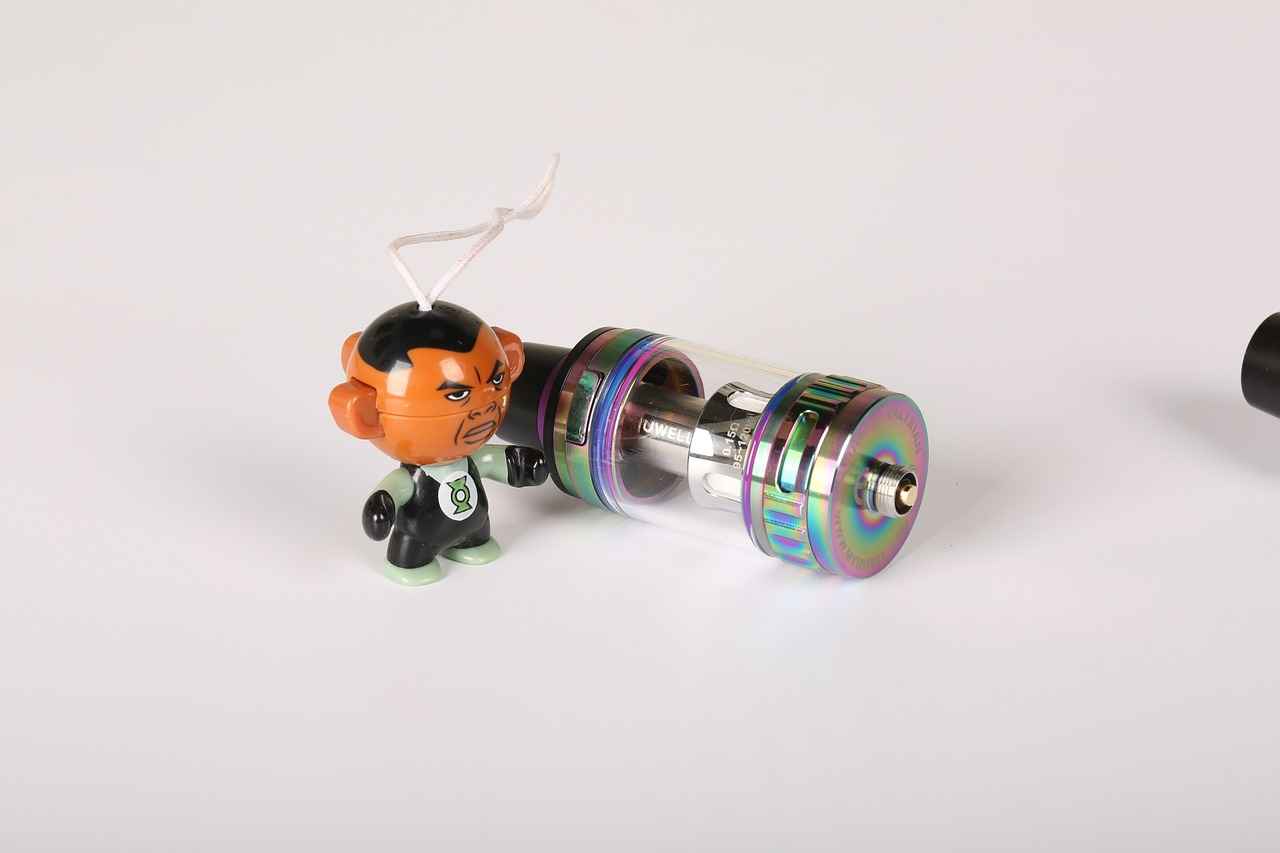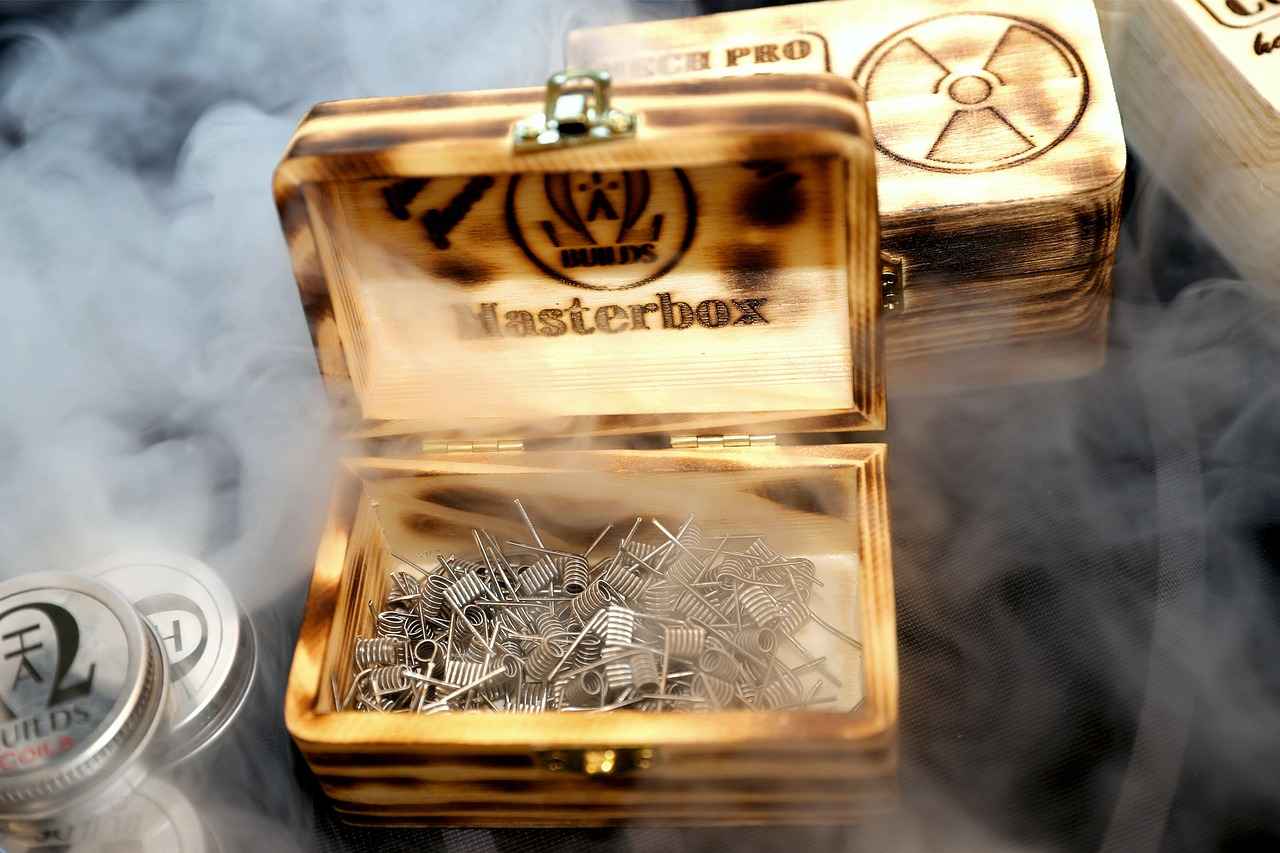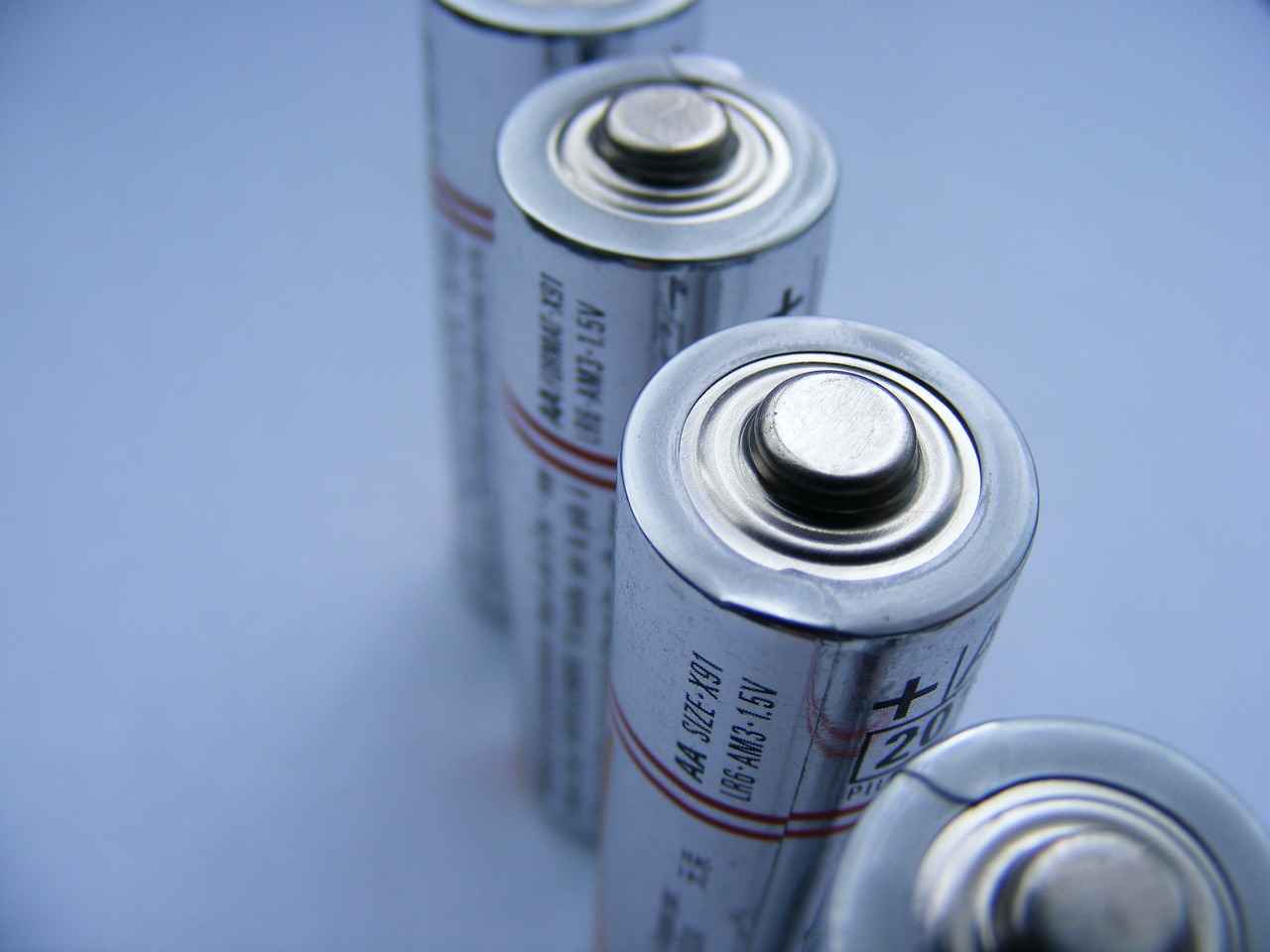This article delves into the charging time for disposable vapes, sets realistic battery life expectations, and offers practical tips to enhance your vaping experience.
Understanding the average charging time for disposable vapes is crucial for efficient use. Typically, charging a disposable vape takes between 30 minutes to 2 hours, depending on the model and battery capacity. Many users find that knowing this range helps them plan their usage effectively, ensuring they never run out of battery unexpectedly.
Battery size plays a significant role in determining how long it takes to charge a disposable vape. Larger batteries generally require more time to reach a full charge, impacting user experience. For instance, a vape with a 1000mAh battery may take longer to charge than one with a 300mAh battery. Understanding this can help users select devices that meet their needs.
Most disposable vapes feature battery capacities ranging from 200mAh to 1000mAh. Knowing these capacities helps users estimate charging times and overall usage duration effectively. For example, a device with a 500mAh battery can typically last longer than one with a 300mAh battery, making it essential for users to consider their vaping habits.
Higher battery capacity typically means longer vaping sessions. Understanding this relationship allows users to choose vapes that align with their preferences for duration and convenience. If you enjoy extended sessions, opting for a device with a larger battery capacity is advisable.
Yes, various brands may utilize different battery technologies, affecting both charging time and longevity. Researching specific brands can provide insights into expected performance and reliability. For instance, some brands may implement fast-charging technology, allowing for quicker recharges.
Maximizing battery life involves several best practices, including:
- Proper Storage: Keep your vape in a cool, dry place.
- Avoiding Extreme Temperatures: Both heat and cold can negatively impact battery performance.
- Not Overcharging: Disconnect the vape once it reaches full charge to prevent battery damage.
These practices can significantly extend the usability of your vape.
Most disposable vapes have indicators such as LED lights that signal when the device is fully charged. Recognizing these signs can prevent overcharging and enhance battery longevity. Typically, a solid light indicates a full charge, while a blinking light may signify that charging is in progress.
If your disposable vape fails to charge, troubleshooting steps include:
- Checking the power source to ensure it’s functioning.
- Examining the charging port for any debris or damage.
- Considering the possibility of a defective device.
These steps can help identify the issue and determine if it’s time for a replacement.
Knowing when to replace your disposable vape is essential. Signs include:
- A burnt taste while vaping.
- Reduced vapor production.
- A lack of charging response.
These indicators suggest that it’s time for a new device, ensuring you continue to enjoy a satisfying vaping experience.
Environmental conditions such as temperature and humidity can influence the efficiency of charging disposable vapes. Understanding these factors can help optimize charging practices for better performance. For instance, charging in extreme temperatures can lead to slower charging times or potential battery damage.
The ideal temperature for charging disposable vapes is between 15°C and 25°C (59°F to 77°F). Charging outside this range can adversely affect battery performance. Ensuring that your vape is charged in a suitable environment can enhance its lifespan and functionality.
High humidity levels can lead to condensation inside the device, potentially affecting battery performance. Keeping the vape in a dry environment is crucial for maintaining optimal functionality. Users should be mindful of where they store their devices to prevent moisture-related issues.

What is the Average Charging Time for Disposable Vapes?
Understanding the average charging time for disposable vapes is crucial for efficient use. Typically, charging a disposable vape takes between 30 minutes to 2 hours, depending on the model and battery capacity. This variability can significantly influence your vaping experience, making it essential for users to be aware of their device’s specifications.
When you purchase a disposable vape, one of the first considerations should be its charging time. The average charging duration varies widely based on several factors, including the battery capacity and the technology used in the device. Most disposable vapes are designed for convenience, allowing users to recharge them quickly before their next use.
- Battery Capacity: Vapes with larger batteries (e.g., 800mAh to 1000mAh) generally take longer to charge compared to those with smaller capacities (e.g., 200mAh to 400mAh).
- Charging Technology: Some brands incorporate fast-charging technology, which can reduce the time needed to reach a full charge.
- Charger Type: The type of charger used can also impact charging speed. USB chargers may vary in output, affecting the overall charging duration.
Battery size plays a significant role in determining how long it takes to charge a disposable vape. Larger batteries generally require more time to reach a full charge, which can impact user experience. For example, a vape with a 1000mAh battery may take closer to the maximum charging time of 2 hours, while a smaller vape with a 300mAh battery may only need around 30 to 45 minutes.
Most disposable vapes feature battery capacities ranging from 200mAh to 1000mAh. Knowing these capacities helps users estimate charging times and overall usage duration effectively. A vape with a 400mAh battery might provide a decent vaping experience for a few hours, while a 600mAh or higher capacity can extend usage significantly.
Higher battery capacity typically means longer vaping sessions. This relationship allows users to choose vapes that align with their preferences for duration and convenience. For instance, if you prefer longer sessions without frequent recharging, opting for a vape with a larger battery capacity is advisable.
Yes, various brands may utilize different battery technologies, affecting both charging time and longevity. Researching specific brands can provide insights into expected performance and reliability. Some brands may prioritize fast charging, while others may focus on maximizing battery life, leading to variations in user experience.
Maximizing battery life involves several best practices, including:
- Proper Storage: Store your vape in a cool, dry place to prevent battery degradation.
- Avoiding Extreme Temperatures: Extreme heat or cold can negatively affect battery performance.
- Not Overcharging: Disconnect the vape once it reaches a full charge to enhance battery longevity.
Most disposable vapes have indicators such as LED lights that signal when the device is fully charged. Recognizing these signs can prevent overcharging and enhance battery longevity.
If your disposable vape fails to charge, troubleshooting steps include checking the power source, examining the charging port, or considering the possibility of a defective device. Sometimes, simply switching the charging cable or using a different outlet can resolve the issue.
Knowing when to replace your disposable vape is essential. Signs include a burnt taste, reduced vapor production, or a lack of charging response, indicating that it’s time for a new device. Regularly monitoring these indicators can prevent unpleasant experiences while vaping.
Environmental conditions such as temperature and humidity can influence the efficiency of charging disposable vapes. Understanding these factors can help optimize charging practices for better performance.
The ideal temperature for charging disposable vapes is between 15°C and 25°C (59°F to 77°F). Charging outside this range can lead to slower charging times or potential battery damage.
High humidity levels can lead to condensation inside the device, potentially affecting battery performance. Keeping the vape in a dry environment is crucial for maintaining optimal functionality.

How Do Battery Sizes Affect Charging Duration?
When it comes to disposable vapes, battery size is a crucial factor that significantly influences the charging duration. Understanding how battery sizes affect charging times can greatly enhance your vaping experience. In this section, we will delve into the relationship between battery size and charging duration, providing insights that can help you make informed choices.
The charging time for disposable vapes can vary widely based on the capacity of the battery. Generally, batteries in disposable vapes range from 200mAh to 1000mAh. Smaller batteries, such as those around 200mAh, typically charge faster, often within 30 minutes. In contrast, larger batteries, particularly those nearing 1000mAh, can take up to 2 hours or more to reach a full charge.
This variance is primarily due to the energy storage capacity of the battery. A larger battery can hold more energy, which means it requires a longer charging period to fill to capacity. This can impact user experience, especially for those who prefer quick sessions or need their devices ready in a short time.
Understanding the common battery capacities can help users estimate charging times and overall usage duration effectively. Here’s a quick overview of typical battery capacities:
- 200mAh: Quick charging, ideal for light users.
- 400mAh: A balanced option for moderate users.
- 600mAh: Suitable for regular users seeking longer sessions.
- 1000mAh: Best for heavy users, but takes longer to charge.
Higher battery capacity not only affects charging duration but also influences vaping time. A vape with a larger battery can typically provide longer sessions before needing a recharge. For instance, a 1000mAh battery can last significantly longer than a 200mAh battery, making it a preferred choice for those who vape frequently.
Indeed, various brands may utilize different battery technologies, which can affect both charging time and longevity. Some brands may implement fast-charging technology, allowing larger batteries to charge more quickly than traditional options. Researching specific brands and their battery specifications can provide insights into expected performance and reliability.
To ensure that your disposable vape battery lasts as long as possible, consider the following best practices:
- Proper Storage: Store your vape in a cool, dry place to prevent battery degradation.
- Avoid Extreme Temperatures: Keep your device away from high heat or cold to maintain optimal performance.
- Don’t Overcharge: Disconnect the charger once it’s fully charged to extend battery life.
Most disposable vapes come equipped with indicators, such as LED lights, that signal when the device is fully charged. Recognizing these signs can help prevent overcharging and enhance the longevity of your battery.
If your disposable vape fails to charge, consider these troubleshooting steps:
- Check the power source to ensure it’s functioning.
- Examine the charging port for any debris or damage.
- Consider the possibility of a defective device and consult the manufacturer if necessary.
Recognizing when to replace your disposable vape is crucial for maintaining a satisfying experience. Signs of a failing device include:
- A burnt taste when inhaling.
- Reduced vapor production.
- A lack of response when attempting to charge.
By understanding the dynamics of battery sizes and their impact on charging duration, you can optimize your vaping experience and choose devices that align with your preferences.
What are Common Battery Capacities in Disposable Vapes?
When it comes to disposable vapes, understanding the battery capacities is essential for maximizing your vaping experience. Most disposable vapes feature battery capacities ranging from 200mAh to 1000mAh. Knowing these capacities helps users estimate charging times and overall usage duration effectively. This article delves deeper into the common battery capacities found in disposable vapes, their implications for vaping duration, and how to optimize your experience.
Disposable vapes typically come with a variety of battery capacities, which can significantly affect performance:
- 200mAh to 400mAh: These smaller batteries are often found in entry-level devices, providing a limited number of puffs and requiring more frequent replacements.
- 500mAh to 700mAh: This range is more common in mid-tier disposable vapes, offering a balance between battery life and portability. Users can expect a moderate number of puffs before needing a new device.
- 800mAh to 1000mAh: High-capacity batteries are typically found in premium disposable vapes. They offer longer vaping sessions and are ideal for users who prefer extended use without frequent replacements.
Understanding how battery capacity influences vaping duration is crucial. Higher capacity batteries typically provide longer usage times. For instance, a 1000mAh battery can offer significantly more puffs compared to a 200mAh battery. This is particularly beneficial for users who vape frequently or prefer longer sessions without interruption.
Charging times for disposable vapes can vary based on battery capacity:
- 200mAh: Approximately 30 minutes
- 500mAh: Around 1 hour
- 1000mAh: Up to 2 hours
Being aware of these times allows users to plan their vaping sessions better and ensures they are never caught off guard with a dead battery.
Yes, different brands may utilize various battery technologies, which can affect both charging time and longevity. Some brands may incorporate advanced battery management systems that enhance performance and lifespan. Researching specific brands can provide insights into expected performance and reliability, ensuring users select a vape that meets their needs.
To extend the life of your disposable vape’s battery, consider the following tips:
- Store Properly: Keep your vape in a cool, dry place to prevent battery degradation.
- Avoid Overcharging: Although many disposable vapes have built-in protections, it’s best to unplug them once fully charged.
- Use Wisely: Avoid long, continuous puffs that can drain the battery quickly.
Most disposable vapes come equipped with indicators, such as LED lights, that signal when the device is fully charged. Recognizing these signs not only helps prevent overcharging but also enhances battery longevity, ensuring a better vaping experience.
If your disposable vape fails to charge, consider the following troubleshooting steps:
- Check the power source to ensure it is functioning.
- Examine the charging port for any debris or damage.
- If issues persist, the device may be defective, and it might be time to replace it.
By understanding battery capacities and their implications, users can make informed decisions about their disposable vape choices, ensuring a satisfying vaping experience.
How Does Battery Capacity Influence Vaping Time?
Understanding how battery capacity influences vaping time is essential for both novice and experienced users. The relationship between battery capacity and vaping duration can significantly impact your overall experience. In this section, we will delve into the intricacies of battery capacity and its effects on the vaping session length.
Battery capacity is measured in milliampere-hours (mAh), indicating how much energy a battery can store. For disposable vapes, this capacity typically ranges from 200mAh to 1000mAh. A higher mAh rating generally means that the battery can provide power for a longer period before needing a recharge or replacement.
Higher battery capacity typically translates to longer vaping sessions. For instance, a disposable vape with a 1000mAh battery can last significantly longer than one with a 200mAh battery. This is particularly important for users who prefer longer sessions without frequent interruptions for charging or replacement. Understanding this relationship allows users to choose vapes that align with their preferences for duration and convenience.
- Convenience: Longer battery life means less hassle with frequent replacements.
- Cost-Effectiveness: Higher capacity vapes may offer better value over time by reducing the number of devices needed.
- Consistent Performance: Larger batteries often maintain a stable voltage output, providing a more consistent vaping experience.
While battery capacity is a critical factor, several other elements can impact how long a vape lasts:
- Usage Patterns: Frequent and heavy usage will deplete the battery faster than occasional use.
- Device Settings: Higher wattage settings can drain the battery quicker, affecting the overall vaping time.
- Environmental Conditions: Extreme temperatures can negatively influence battery performance and lifespan.
To ensure you get the most out of your disposable vape, consider the following tips:
- Avoid Overcharging: Disconnect the device once it’s fully charged to prevent damage.
- Store Properly: Keep your vape in a cool, dry place to maintain optimal battery health.
- Use Wisely: Opt for lower wattage settings if your device allows for it, to conserve battery life.
Yes, different brands may utilize various battery technologies, affecting both charging time and longevity. Some brands may offer advanced battery management systems that optimize performance and extend lifespan. Researching specific brands can provide insights into expected performance and reliability.
In summary, understanding how battery capacity influences vaping time is crucial for making informed choices about disposable vapes. By selecting a device that aligns with your vaping habits and preferences, you can enhance your overall experience.
Are There Variations Among Different Brands?
When it comes to disposable vapes, one of the most significant factors influencing their performance is the type of battery technology employed by various brands. Understanding these variations can help users make informed decisions about which products to choose, ensuring a satisfying vaping experience.
Different brands often utilize distinct battery technologies to enhance their product offerings. Some brands may prioritize quick charging, while others might focus on longer battery life. This results in a diverse range of charging times and overall longevity among disposable vapes. For instance, a brand using lithium-ion batteries may offer a faster charge compared to one using older nickel-cadmium technology.
The type of battery not only influences charging time but also impacts the overall performance of the vape. For example:
- Lithium-ion batteries: Known for their efficiency and longevity, these batteries typically charge faster and last longer than other types.
- Nickel-cadmium batteries: While cheaper, they often have a shorter lifespan and longer charging times, which can be a drawback for users.
When selecting a disposable vape, consider the following factors related to battery technology:
- Charging Time: Look for brands that provide clear information on charging durations. A model that charges in less than an hour may be more convenient for everyday use.
- Battery Capacity: Brands may offer different capacities ranging from 200mAh to 1000mAh. Higher capacity often means longer usage time but can also lead to longer charging periods.
- Brand Reputation: Researching customer reviews and expert opinions can provide insights into a brand’s reliability and performance.
To maximize the longevity and efficiency of your disposable vape’s battery, consider these practical tips:
- Store Properly: Keep your vape in a cool, dry place to prevent battery degradation.
- Avoid Overcharging: Disconnect the charger once the device is fully charged to avoid damaging the battery.
- Monitor Usage: Be aware of how often you are using the device, as this can affect overall battery life.
Recognizing when your disposable vape’s battery is failing can save you from an unsatisfactory experience. Look for:
- Reduced Vapor Production: A noticeable decrease in vapor can indicate a weak battery.
- Burnt Taste: This unpleasant flavor may signal that the battery is not providing sufficient power.
- Charging Problems: If your device fails to charge or takes unusually long, it may be time to consider a replacement.
In conclusion, variations among different brands in battery technology significantly influence the performance and reliability of disposable vapes. By understanding these differences and considering factors such as charging time, battery capacity, and brand reputation, users can make informed choices that enhance their overall vaping experience.
How to Maximize Battery Life in Disposable Vapes?
When it comes to enhancing your vaping experience, understanding how to maximize battery life in disposable vapes is essential. By adopting a few best practices, you can significantly extend the usability of your device, ensuring you get the most out of each charge. Below, we delve into effective strategies that can help you maintain optimal battery performance.
Storing your disposable vape correctly can have a profound impact on its battery life. It is advisable to keep your vape in a cool, dry place, away from direct sunlight and moisture. Extreme temperatures can damage the battery, leading to reduced performance. Aim to store your device at room temperature, ideally between 15°C and 25°C (59°F to 77°F).
Another critical factor in battery longevity is avoiding overcharging. Many disposable vapes come equipped with built-in safety features, but it is still wise to unplug the device once it reaches full charge. Overcharging can generate excess heat, which may degrade the battery over time, leading to a shorter lifespan.
Keeping an eye on your battery levels can prevent unexpected shutdowns. Most disposable vapes feature an LED indicator that signals when the battery is low. By being proactive and charging your device before it completely depletes, you can help maintain its overall health.
Every battery undergoes a limited number of charge cycles before its capacity diminishes. A charge cycle is defined as a full discharge followed by a full recharge. By minimizing the number of complete cycles, such as by charging when the battery is around 20-30%, you can prolong the battery life of your disposable vape.
Using the appropriate charger is vital for the health of your vape’s battery. Always use the charger provided by the manufacturer or one that meets the required specifications. Using a charger with a higher voltage than recommended can lead to overheating and damage.
A clean charging port is crucial for effective charging. Dust and debris can accumulate, hindering the connection between the charger and the device. Regularly inspect and clean the charging port with a soft, dry cloth to ensure optimal performance.
Environmental conditions can significantly affect battery performance. High humidity can cause condensation inside the vape, impacting battery efficiency. It is best to keep your device in a dry environment to prevent moisture-related issues. Additionally, extreme cold can cause the battery to drain faster, so be mindful of where you use your vape.
Being aware of the signs that your battery may be wearing out is essential. If you notice a decreased vapor production or a burnt taste, it may indicate that the battery is no longer functioning optimally. Understanding these signs allows you to take action before the situation worsens.
By implementing these strategies, you can effectively maximize the battery life of your disposable vape. Proper storage, avoiding overcharging, and monitoring battery levels are just a few steps that can enhance your overall vaping experience. Remember, a well-maintained battery not only improves usability but also contributes to a more enjoyable vaping experience.

What Indicators Show When a Disposable Vape is Fully Charged?
Understanding the indicators of a fully charged disposable vape is essential for maintaining battery health and ensuring a satisfying vaping experience. Recognizing these signs not only prevents overcharging but also extends the lifespan of your device. Most disposable vapes are equipped with various indicators, typically in the form of LED lights or other visual cues, to inform users about the charging status.
- LED Light Signals: The most common indicator is an LED light that changes color or blinks in specific patterns. For instance, a solid green light often signifies that the vape is fully charged, while a blinking red light may indicate that the device is still charging.
- Device Temperature: Some models may also exhibit a change in temperature. A device that feels warm during charging can indicate that it is actively charging, while a cool device may suggest that charging is complete.
- Vapor Production: Once fully charged, users may notice improved vapor production. If the device produces a consistent and satisfying vapor, it is a good sign that the battery is adequately charged.
Recognizing when your disposable vape is fully charged is crucial for several reasons:
- Preventing Overcharging: Overcharging can lead to battery degradation and may even pose safety risks. By understanding the indicators, users can unplug the device promptly once it is charged.
- Maximizing Battery Lifespan: Proper charging practices enhance the longevity of the battery. Regularly monitoring charging indicators helps users avoid unnecessary wear on the battery.
- Improving Vaping Experience: A fully charged device ensures that users enjoy a consistent and satisfying vaping experience, with optimal vapor production and flavor.
If your disposable vape does not show any signs of charging, consider the following troubleshooting steps:
- Check the Power Source: Ensure that the charger is plugged into a working outlet or USB port.
- Inspect the Charging Cable: Look for any signs of damage or wear on the charging cable, as this could affect the charging process.
- Examine the Charging Port: Dust or debris in the charging port can prevent a proper connection. Gently clean the port with a soft brush or compressed air.
Different brands may employ various methods for indicating charging status. Some may use more advanced technology, such as smart LED displays that provide users with detailed information about battery life and charging status. Others may stick to simpler LED light indicators. Researching specific brands can help users understand the expected performance and reliability of their devices.
In conclusion, knowing the indicators that signal a fully charged disposable vape is essential for every user. By paying attention to these signs, you can enhance your vaping experience while ensuring the longevity of your device. Remember, a well-cared-for vape not only performs better but also provides a more enjoyable experience.
What Should You Do If Your Vape Doesn’t Charge?
When you encounter issues with your disposable vape not charging, it can be frustrating. However, understanding the potential causes and solutions can help you troubleshoot effectively. Below are some essential steps to follow if your vape fails to charge.
The first step in troubleshooting is to ensure that the power source you are using is functioning correctly. Try plugging your charger into a different outlet or using a different USB port. If you are charging via a power bank or computer, ensure that they are powered on and functioning properly. Sometimes, the issue may not be with the vape itself but with the source of power.
Inspect the charging cable for any visible damage or fraying. A damaged cable can prevent your device from receiving power. If possible, try using a different charging cable that is compatible with your vape. This simple step can often resolve charging issues.
Next, take a close look at the charging port on your disposable vape. Debris, lint, or corrosion can obstruct the connection and prevent charging. Use a soft brush or compressed air to clean out the port carefully. Ensure that there are no foreign objects lodged inside that could impede the connection.
If you have checked the power source, charging cable, and port but the device still won’t charge, it may be a sign of a defective device. In this case, consider reaching out to the manufacturer or the retailer where you purchased the vape. Many brands offer warranties that could cover replacements for defective units.
Most disposable vapes come equipped with indicator lights that signal charging status. Familiarize yourself with these indicators to determine if your device is receiving power. If the light is not illuminating, this could further confirm a charging issue.
Understanding the health of your battery is also crucial. Disposable vapes have a limited lifespan, and if you have been using the device for an extended period, it may simply be time for a replacement. Signs of battery decline include reduced vapor production and a burnt taste, which indicate that the battery may no longer hold a charge effectively.
Lastly, consider the environmental factors affecting your vape. Extreme temperatures can impact battery performance and charging efficiency. Ensure that you are charging your device in a suitable environment, ideally between 15°C and 25°C (59°F to 77°F), to maximize performance.
By following these troubleshooting steps, you can effectively address the issue of your disposable vape not charging. Understanding the various components involved will not only help you resolve the problem but also enhance your overall vaping experience.
When Should You Replace Your Disposable Vape?
When it comes to disposable vapes, understanding when to replace your device is crucial for maintaining an enjoyable vaping experience. Many users may not realize the signs indicating that their vape is no longer functioning optimally. Recognizing these signs can prevent frustration and ensure you always have a satisfying vaping session.
- Burnt Taste: One of the most noticeable signs is a burnt or unpleasant taste when you inhale. This occurs when the coil is damaged or the e-liquid is depleted.
- Reduced Vapor Production: If you notice that the vapor produced is significantly less than usual, it may indicate that the battery is weakening or that the e-liquid is running low.
- Inconsistent Charging Response: If your vape does not charge properly or the LED indicator fails to light up, it could be a sign of a malfunctioning battery.
- Leakage: Any signs of e-liquid leakage can also be a reason to replace your device, as it can affect both performance and safety.
The lifespan of a disposable vape can vary significantly based on usage patterns. For light users, a device may last several days, while heavy users might find themselves replacing it every day or two. It’s essential to monitor your usage and consider replacement when you notice the signs mentioned above.
While disposable vapes are designed for limited use, there are ways to maximize their lifespan:
- Avoid Overcharging: Overcharging can damage the battery and reduce its lifespan. Always unplug the device once it’s fully charged.
- Store Properly: Keep your vape in a cool, dry place to prevent damage from heat or moisture.
- Use Within Recommended Limits: Adhering to the manufacturer’s recommendations for usage can help maintain the device’s integrity.
When replacing your disposable vape, consider the following:
- Research Brands: Different brands offer various qualities, flavors, and battery capacities. Selecting a reputable brand can enhance your vaping experience.
- Explore Flavor Options: Take this opportunity to try new flavors or nicotine strengths that may better suit your preferences.
- Check for User Reviews: Reading reviews can provide insight into product performance and help you make an informed choice.
Continuing to use a disposable vape that shows signs of wear can lead to several issues:
- Health Risks: A damaged device may produce harmful substances that can affect your health.
- Poor Experience: A burnt taste or reduced vapor can lead to dissatisfaction and an overall poor vaping experience.
- Device Malfunction: A malfunctioning vape could pose safety risks, including potential battery failure.
In conclusion, being aware of the signs that indicate when to replace your disposable vape is essential for ensuring a safe and enjoyable vaping experience. Regularly monitoring your device and understanding its limitations can enhance your overall satisfaction.

How Do Environmental Factors Impact Charging Time?
Understanding how environmental factors impact the charging time of disposable vapes is essential for optimizing their performance. The efficiency of charging can be significantly influenced by conditions such as temperature and humidity. By recognizing these factors, users can improve their vaping experience and ensure that their devices are functioning at their best.
The temperature at which a disposable vape is charged plays a crucial role in determining how quickly it reaches a full charge. Ideally, the charging temperature should be maintained between 15°C and 25°C (59°F to 77°F). Charging outside this range can have adverse effects:
- Low Temperatures: Charging in cold conditions can slow down the chemical reactions within the battery, leading to longer charging times and potentially incomplete charges.
- High Temperatures: Excessive heat can cause the battery to overheat, risking damage or even failure. It may also lead to reduced battery lifespan.
Humidity is another critical factor that can impact the charging process. High humidity levels can introduce moisture into the vape, potentially leading to:
- Condensation: Moisture buildup can interfere with the battery’s internal components, resulting in diminished performance or malfunction.
- Corrosion: Prolonged exposure to high humidity can cause corrosion of electrical contacts, which may hinder charging efficiency.
To ensure that your disposable vape charges efficiently, consider the following practical tips:
- Charge in a Controlled Environment: Aim to charge your device in a place where temperature and humidity levels are stable and within the recommended range.
- Avoid Direct Sunlight: Keep your vape away from direct sunlight or heat sources while charging to prevent overheating.
- Use Quality Chargers: Ensure that you are using a reliable charger that matches the specifications of your device to avoid any potential damage.
Recognizing when your disposable vape is charging under optimal conditions can help you maintain its longevity. Look out for:
- Consistent LED Indicators: Many disposable vapes come with LED lights that indicate charging status. A steady light often signifies that the device is charging correctly.
- No Overheating: If your device remains cool to the touch during charging, it is likely in a suitable environment.
By understanding how temperature and humidity affect the charging process, users can take proactive measures to enhance their vaping experience. Implementing these tips and being mindful of environmental conditions can lead to better battery performance and extended device life.
What is the Ideal Temperature for Charging?
When it comes to charging disposable vapes, understanding the ideal temperature is crucial for both performance and safety. The recommended temperature range for charging these devices is between 15°C and 25°C (or 59°F to 77°F). Operating outside this range can lead to a multitude of issues, including slower charging times and potential battery damage.
Charging a disposable vape in excessively cold conditions can result in inefficient charging. The battery may struggle to accept the charge, leading to longer wait times before the device is ready to use. On the other hand, charging in high temperatures can cause the battery to overheat, which not only affects the charging speed but also poses a risk of battery failure or even explosion in extreme cases.
It is essential to monitor the environment where you charge your vape. For instance, if you live in a region with cold winters, consider bringing your vape indoors to charge in a more temperate environment. Similarly, avoid charging your vape in direct sunlight or near heat sources, as this can elevate the temperature beyond the recommended range.
To further enhance your charging experience, here are some practical tips:
- Use a Quality Charger: Ensure you are using a charger that matches the specifications of your device. This can prevent overheating and ensure efficient charging.
- Avoid Overcharging: Disconnect the vape once it reaches a full charge to prevent battery degradation.
- Store Properly: When not in use, keep your disposable vape in a cool, dry place to maintain optimal battery health.
Additionally, it’s important to note that humidity also plays a significant role in battery performance. High humidity can lead to condensation forming inside the device, which can further compromise the battery’s integrity. Therefore, always aim to charge your vape in a dry environment to avoid any moisture-related issues.
In summary, adhering to the ideal temperature range of 15°C to 25°C while charging disposable vapes is vital for ensuring the longevity and efficiency of the battery. By being mindful of environmental factors and following best practices, you can significantly enhance your vaping experience while minimizing risks associated with improper charging.
How Does Humidity Affect Battery Performance?
When it comes to vaping, understanding the various factors that can affect battery performance is essential for ensuring a smooth and enjoyable experience. One of the significant environmental factors that can impact your disposable vape’s battery is humidity.
High humidity levels can lead to condensation forming inside the vape device. This condensation can potentially disrupt the battery’s internal components, leading to reduced efficiency and performance. Moisture can cause short circuits, corrosion, and other issues that may significantly shorten the lifespan of the battery.
Keeping your vape in a dry environment is crucial for maintaining optimal functionality. A dry atmosphere helps prevent moisture buildup, which protects the battery from damage. When the battery remains dry, it can perform at its best, providing consistent vapor production and flavor.
- Store Properly: Keep your vape in a cool, dry place away from direct sunlight and moisture sources.
- Use Silica Gel Packs: Consider using silica gel packs in your storage area to absorb excess moisture.
- Avoid Extreme Conditions: Do not expose your device to high humidity environments, such as bathrooms or saunas.
Recognizing the signs of humidity damage is essential for maintaining your device. Common indicators include:
- Reduced Vapor Production: If you notice a significant decrease in vapor, it may be due to moisture affecting the battery.
- Unusual Battery Behavior: If your battery discharges quickly or fails to charge, humidity could be the culprit.
- Corrosion: Visible signs of rust or corrosion around the battery terminals can indicate moisture exposure.
Yes, humidity can also impact the charging time of your disposable vape. Excess moisture can slow down the charging process, as the battery may struggle to accept the charge effectively. This could lead to longer wait times before your vape is ready for use.
If your vape gets wet, it’s crucial to act quickly to minimize damage:
- Turn Off the Device: Immediately power down the device to prevent short circuits.
- Dry the Exterior: Use a soft cloth to gently wipe down the outside of the vape.
- Let It Air Dry: Place the device in a dry, well-ventilated area for at least 24 hours before attempting to charge it again.
Over time, exposure to high humidity can lead to permanent damage to the battery. This can result in a shorter lifespan, decreased performance, and ultimately, the need for a replacement device sooner than expected. Protecting your vape from humidity is not just about immediate performance; it’s also about ensuring long-term usability.
In summary, high humidity can significantly affect the battery performance of disposable vapes. By keeping your device in a dry environment and taking precautions against moisture exposure, you can enhance its functionality and longevity. Understanding these factors is essential for any vaping enthusiast looking to optimize their experience.
Frequently Asked Questions
- How long does it typically take to charge a disposable vape?
Charging a disposable vape usually takes between 30 minutes to 2 hours, depending on the model and battery capacity. It’s always a good idea to check the manufacturer’s guidelines for specific times.
- What should I do if my disposable vape isn’t charging?
If your vape isn’t charging, first check the power source and ensure the charging port is clean. If everything seems fine, it might be a defective device, and you may need to consider a replacement.
- How can I maximize the battery life of my disposable vape?
To extend your vape’s battery life, store it in a cool, dry place, avoid extreme temperatures, and never overcharge it. These simple practices can significantly enhance your vaping experience.
- What are the signs that my disposable vape needs to be replaced?
Look out for signs like a burnt taste, decreased vapor production, or if the device won’t charge. These indicators usually mean it’s time to get a new vape.
- Does temperature affect the charging time of disposable vapes?
Absolutely! The ideal charging temperature is between 15°C and 25°C (59°F to 77°F). Charging outside this range can slow down the process or even damage the battery.




